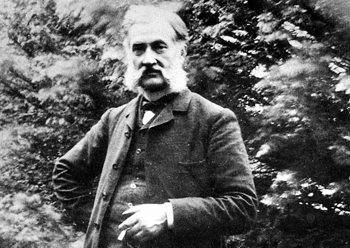Three of the Weirdest Unsolved Mysteries

Photo Source: Pexels.com
January 23, 2023
In a world full of complex and, frankly, unstable people, odd experiences and strange occurrences are an inevitability. The unexplained and unsolved are intriguing to many, and I am no stranger to the cold cases and forgotten mysteries of the world. Whether it’s true crime, psychology, or just plain supernatural, I am a sucker for unsolved crimes and cases of history.
If you’re looking for a new hyper fixation or just want an odd story, these are three of my favorite unsolved cases. Disclaimer: I am not an expert on these cases and do not have access to all the information. I will not be discussing theories or explanations in this article, just reporting facts of the cases as they stand today.

The Sodder Children Disappearance:
On Christmas Eve of 1945, in Fayetteville, West Virginia, the Sodder family home mysteriously caught fire around one in the morning. The father, George, and mother, Jennie, made it out, along with four of their nine children, but five were still in the house. These children, two boys and three girls, ranged from ages 5 to 14. The eldest daughter, Marion, ran to two neighbors’ homes to call the fire department, but the lines were strangely dead. A second neighbor drove to town to find the fire chief, but he didn’t get there until eight that morning, even though they were less than three miles away. The fire burned all night, turning the house to literal ash. When investigated, police and firemen found no evidence of bodies or even bones left behind. The five Sodder children were announced dead by the fire chief and coroner’s office, who believed the fire fully cremated them. This would not be possible, however, as the fire could have only reached 190 degrees, which would have left at least bone fragments behind. George and Jennie believed their children may have been kidnapped and the fire was set as a diversion. For decades, they hired private investigators and researched on their own to find their lost children, but were met with little success. They died in the seventies and made their children and grandchildren promise to keep looking for their families. While many may throw their beliefs off as grief, Geroge’s immigration history from Italy to America may provide some explanation.
George left Italy during Dictator Mussolini’s rise to power and was part of the freedom revolts when his policy became oppressive. In Fayetteville, a very Italian-centric town, George was not quiet about his disdain for Mussolini and his democratic involvement, causing fights and feuds to break out with some extremist residences. A week before the fire, a life insurance salesman went to the Sodder house, and, when he realized he was not going to sell, he threatened Geroge’s life, quoting “Your goddamn house is going up and smoke, and your children are going to be destroyed. You’re going to pay for the dirty remarks you’ve been making about Mussolini!”
A little too obvious of a threat, but when Greoge reported this statement to the police, they did nothing. The children have yet to be found, and only the youngest child, Sylvia, is alive. There is a memorial and sign on the drive to Fayetteville, begging passersby to call if they know anything.

On August 29, 2016, in Sliven, Australia, the Tromp family of five fled their farm with no cell phones, no wallets, and no IDs, claiming their things would be tracked by some unknown power. Owners of an earth moving company and a berry farm, the family worked all days of the week, with the Tromp children working the most. When reported missing, police noted their house was filled with tax reports, financial records, and social security items, all neatly piled, but they were “clearly looking for something”, though what their search was for has never been discovered. The police commented later this was the “most bizarre case in 30 years,” as everything that occurred was unexplainable and off. There is nothing off the table for this case, so every theory could be correct.
The family began by driving 500 miles northeast to Bathurst, where middle child Michell, age 20, brought out his hidden phone. The family promptly forced him to throw it out of the car and drive onward, as they were convinced they were being tracked. The next day, Michell left the family in the early morning. Later, while stopping at Jenolan Caves, the other two children, Ella, 23, and Riana, 29, split from the family as well, stealing a car and reporting their parents missing in Goulburn before splitting up themselves without explanation. A local found Riana in the back of his truck on the highway. He told police she was catatonic, couldn’t remember her name, and seemed shaken by something. Ella made it home by the night of the 30th to police in her home.
The next day, Michell made it home on a train, while his parents backtracked to Wangaratta and also split. Jacoba went back north, while Mark is seemingly linked to a strange tail-riding case on a major highway. A couple was playing the viral mobile game Pokemon Go! when a car dangerously tailgated them. When they pulled over, the car behind them did as well. They locked their doors and waited until the driver, believed to be Mark Tromp, stepped out and started running towards them, then paused between the cars and ran into the nearby Merriwa Park and disappeared. To find Mark, police looked into a hotel break-in and searched the woods, but found no one. Jacoba went to Yass and tried to book a hotel with little cash, where she was kindly escorted to a hospital and the police were contacted. On September 3rd, Mark was found wandering down a road in Wangerada at 5:15 am, where he was taken in for questioning, given a mental health assessment, and held for five hours for a family member to take him home. By this point, the Tromp family’s bizarre road trip had become a media frenzy, and as reported were waiting outside for Mark, he gave them the middle finger and started yelling at them.
The day after, Michell and Ella made a public statement about the events, thanking the public for their concern but explaining they have no idea what actually occurred. The family had no history of mental illness, no signs of being under the influence, were financially stable, and were not part of a cult, but the story is still perplexing. The family returned to the farm and resumed normal lives, putting their traumatic holiday in the past. Investigators still have no conclusive leads on what caused this trip, nor why each member of the family split, but this experience will remain in Australia’s mystery history until someone discovers the truth.

Infamous Train Ride of Louis Le Prince:
Many people believe Thomas Edison was the inventor of many modern creations, like the lightbulb and the phonograph. However, he was less of an inventor and more a shrewd businessman, known to steal many of “his” ideas from uncredited and unpatented creators. Perhaps the most interesting case is that of Louis Le Prince. On September 16th, 1890, Louis boarded a train from Dijon to Paris and was never seen again, an event that would literally wipe him from history as the Father of Film.
Born on August 28, 1841, in Metz, France, Louis was a scholar of many topics, his favorites being Art, Chemistry, and Physics. Moving to Leeds, England in 1866, Louis worked as an agent at a brass factory, married a fellow artist, and moved to New York in 1881, where he found inspiration in the panoramic art pieces he’d watch painters create. He loved the immersive feeling of such massive, detailed works, and set out to create something that would invoke the same feeling tenfold: moving pictures. As early as 1885, Louis began working on such a feat of a project, inventing a 16-len camera that would eventually create what we know today as “movies.’. After his first was tested, he began working on a single-lens camera. His daughter, Marie, recalls that as a teenager, she remembers her father projecting moving images on a wall in her home somewhere around 1886, almost two years before even the concept of motion picture capture had entered Edison’s mind. Louis tried to patent the 16-lens camera in the US in 1886 with diction choices that allowed for a single-lens version later on, but this process would take almost two years. Louis would move back to Leeds alone, which may have been motivated by fear of discovery and industrial spies, according to his wife.
In 1888, Louis’s would-be claim-to-fame was completed, a 40-pound mahogany single-lens camera. Moving the hand crank sent light-sensitive paper over a shuttering lens, capturing pictures in quick succession to create a movie. Three of Louis’ original films, shot in 1888, have survived today, and, though boring, one of the people in the films died 10 days after the recording. Edison’s first film wouldn’t be shot until three years later, proving Louis was the first of his kind. Louis moved to celluloid for shooting and producing in 1890, and made three unofficial demonstrations, most famously at the National Opera in Paris, again three years before Edison. This camera style and the use of celluloid would be copied and reproduced to create the film industry as we know it today, so why is Louis Le Prince a forgotten name?
In mid-1890, Louis wrote to his family back in New York, stating he planned on returning in September and officially showing his creation to the public. However, his plans were dependent on him completing a full patent in the US to legally claim him as the inventor of the single lens motion picture camera. The patents he obtained in France and Britain were complete but not legal, and Louis was beginning to feel hopeless. He had sunk himself into severe debt with this project, and if nothing came from his years of work, his family would suffer. After visiting his brother in Dijon, France, Louis boarded a Paris-bound train on a three-leg journey back to New York. He carried only a suitcase filled with the pending patent papers for his single-len camera. Louis’s Assistant would later talk to the press many years later, reminding the public that Louis and the suitcase vanished without a trace on that fateful train ride. Had he made it back to New York in 1890, history would tell a much different story, but fate was not kind to Louis Le Prince, and Edison, once again, took credit for another inventor’s work.
If you are interested in a more in-depth look at these cases and the many theories surrounding them, visit Buzzfeed Unsolved, hosted by Ryan Bergara and Shane Madej. Their banter and chemistry got me into mystery hunting and true crime, not to mention gave me plenty of laughs. They also have a company channel, Watcher, which hosts history game show Puppet History, hilarious drunk ghost saga Too Many Spirits, and much more.










